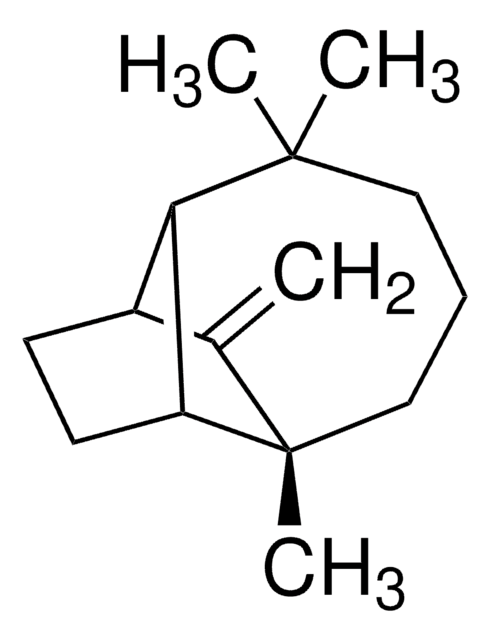289698
2,6-Dimethyl-2,4,6-octatriene
technical grade, 80%
Synonym(s):
Alloocimene
Sign Into View Organizational & Contract Pricing
All Photos(1)
About This Item
Linear Formula:
CH3CH=C(CH3)CH=CHCH=C(CH3)2
CAS Number:
Molecular Weight:
136.23
Beilstein/REAXYS Number:
1719993
EC Number:
MDL number:
UNSPSC Code:
12352100
PubChem Substance ID:
NACRES:
NA.22
Recommended Products
grade
technical grade
assay
80%
form
liquid
refractive index
n20/D 1.542 (lit.)
bp
73-75 °C/14 mmHg (lit.)
density
0.811 g/mL at 25 °C (lit.)
storage temp.
2-8°C
SMILES string
C\C=C(C)\C=C\C=C(\C)C
InChI
1S/C10H16/c1-5-10(4)8-6-7-9(2)3/h5-8H,1-4H3/b8-6+,10-5+
InChI key
GQVMHMFBVWSSPF-SOYUKNQTSA-N
Looking for similar products? Visit Product Comparison Guide
General description
2,6-Dimethyl-2,4,6-octatriene (allo-ocimene) is one of the major constituents of Fissistigma maclurei Merr. It was identified in Alphanso mangoes using GC-MS.
Certificates of Analysis (COA)
Search for Certificates of Analysis (COA) by entering the products Lot/Batch Number. Lot and Batch Numbers can be found on a product’s label following the words ‘Lot’ or ‘Batch’.
Already Own This Product?
Find documentation for the products that you have recently purchased in the Document Library.
Customers Also Viewed
Pagadala D Kamala Jayanthi et al.
Journal of chemical ecology, 38(4), 361-369 (2012-03-23)
The oriental fruit fly, Bactrocera dorsalis, is an economically damaging, polyphagous pest of fruit crops in South-East Asia and Hawaii, and a quarantine pest in other parts of the world. The objective of our study was to identify new attractants
Tran D Thang et al.
Natural product communications, 8(2), 239-242 (2013-03-22)
The essential oils obtained by hydrodistillation from the leaves of five species of Annonaceace grown in Vietnam were analyzed by gas chromatography (GC) coupled with mass spectrometry (GC/MS). The main constituents of Artabotrys hongkongensis Hance were the sesquiterpenes spathulenol (13.1%)
Fitim Destani et al.
Membranes, 10(5) (2020-05-14)
The aim of this work was to analyze the potential of reverse osmosis (RO) membranes in the recovery and concentration of aroma compounds from orange juice evaporator condensate (EC) streams. Concentration experiments were performed by using three RO spiral-wound aromatic
Kyutaro Kishimoto et al.
Plant & cell physiology, 46(7), 1093-1102 (2005-05-10)
Green leafy volatiles or isoprenoids are produced after mechanical wounding or pathogen/herbivore attacks in higher plants. We monitored expression profiles of the genes involved in defense responses upon exposing Arabidopsis thaliana to the volatiles. Among the genes investigated, those known
Irene Terry et al.
Science (New York, N.Y.), 318(5847), 70-70 (2007-10-06)
The reproductive organs of some plants self-heat, release scent, and attract pollinators. The relations among these processes are not well understood, especially in the more ancient, nonflowering gymnosperm lineages. We describe the influence of plant volatiles in an obligate pollination
Our team of scientists has experience in all areas of research including Life Science, Material Science, Chemical Synthesis, Chromatography, Analytical and many others.
Contact Technical Service














